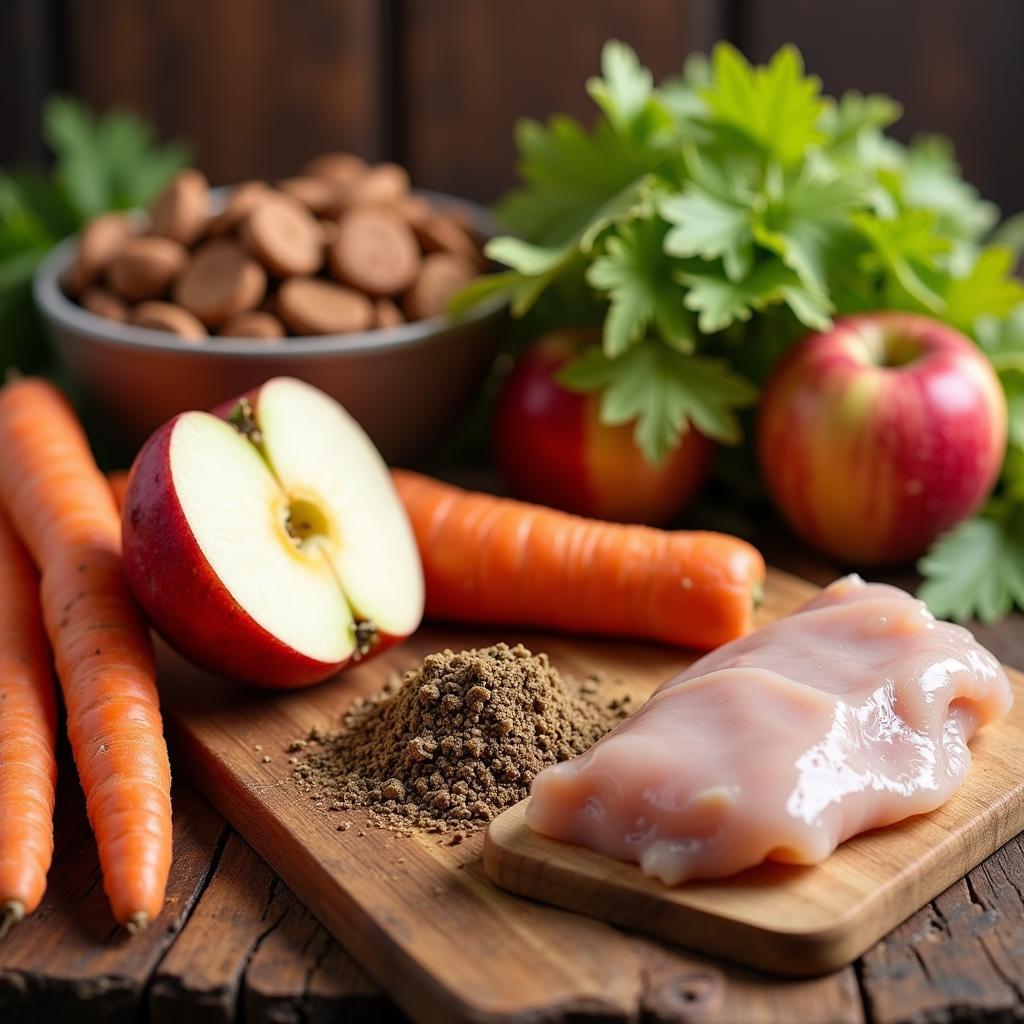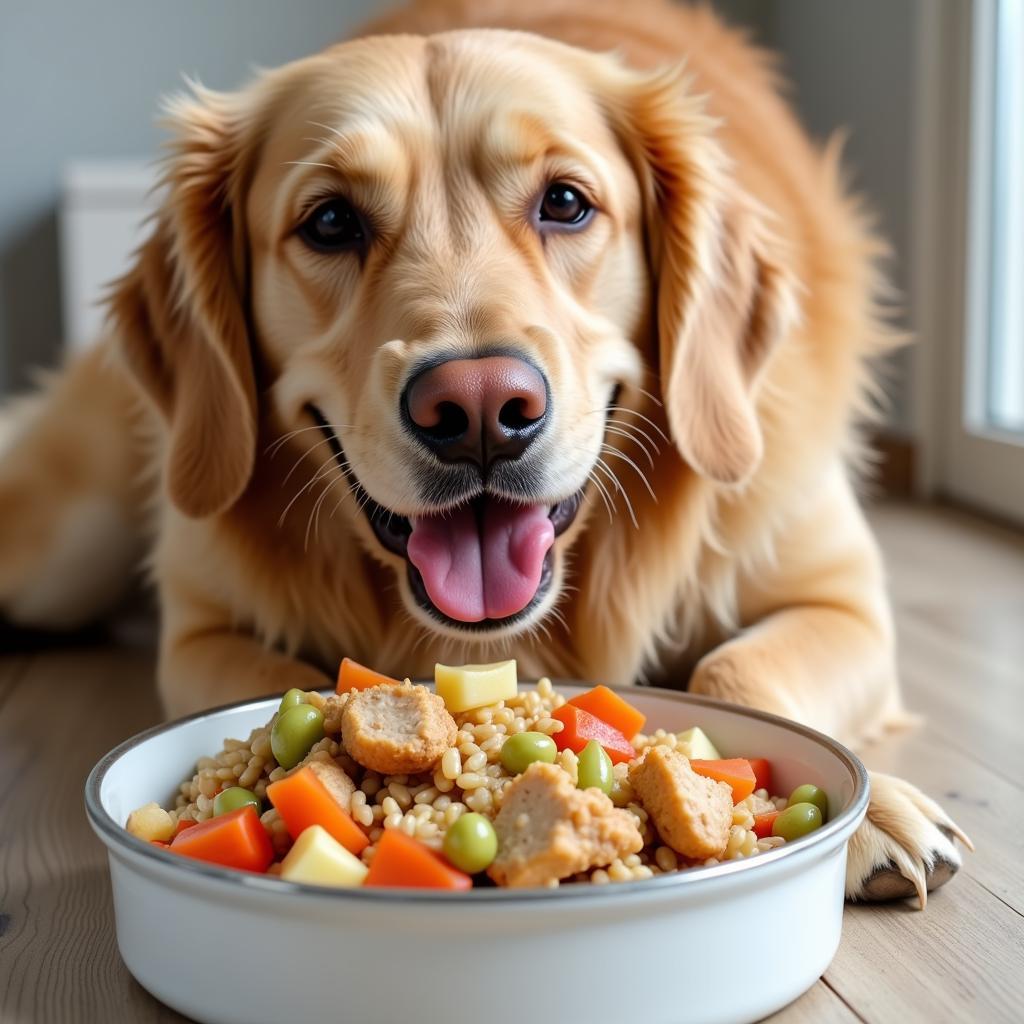Choosing the right food for your furry companion is crucial, especially when they have specific dietary needs. If your veterinarian has recommended a low purine diet for your dog, you might be feeling overwhelmed. But fear not, understanding Low Purine Dog Foods isn’t as daunting as it seems. This comprehensive guide will equip you with all the information you need to make informed decisions for your pet’s health and happiness.
What are Purines and Why Do They Matter in Dog Food?
Purines are naturally occurring compounds found in various foods, including those we consume and those we feed our pets. While essential for normal bodily functions, purines break down into uric acid during digestion. For most dogs, uric acid is efficiently processed and excreted in their urine. However, some dogs may have difficulty metabolizing purines, leading to a buildup of uric acid in their bloodstream, a condition known as hyperuricemia. High levels of uric acid can contribute to a range of health problems, including:
- Urate Stones: These painful bladder stones form when uric acid crystallizes in the urinary tract.
- Gout: This condition, more common in humans, can also affect dogs, causing painful joint inflammation due to uric acid crystal deposits.
- Kidney Problems: Elevated uric acid levels can strain the kidneys, potentially leading to kidney stones or even kidney failure.
 Dog food ingredients with low purine content
Dog food ingredients with low purine content
What are Low Purine Dog Foods?
Low purine dog foods are specifically formulated to minimize the intake of purines, thus reducing the workload on your dog’s kidneys and minimizing the risk of uric acid-related health issues. These diets typically prioritize:
-
Low-Purine Ingredients: Instead of high-purine ingredients like organ meats (liver, kidneys), some fish (anchovies, sardines), and certain legumes, these diets feature low-purine alternatives such as:
- High-Quality Protein Sources: Eggs, chicken, turkey, and white fish
- Complex Carbohydrates: Rice, oatmeal, sweet potatoes, and pumpkin
- Healthy Fats: Fish oil, flaxseed oil
-
Controlled Protein Levels: While protein is essential, excessive amounts can contribute to uric acid production. Low purine diets often feature moderate protein levels, carefully balanced to meet your dog’s needs without overloading their system.
-
Added Moisture: Wet food or incorporating water into dry kibble can aid in proper hydration, supporting healthy kidney function and promoting urine dilution, which helps prevent the formation of urate stones.
 A happy dog enjoying a bowl of low purine dog food
A happy dog enjoying a bowl of low purine dog food
When Should You Consider Low Purine Dog Foods?
Your veterinarian might recommend a low purine diet if your dog:
- Has a history of urate stones: Recurring urate stones indicate a need for dietary intervention to manage uric acid levels.
- Suffers from a breed predisposition: Certain breeds, including Dalmatians, English Bulldogs, and Black Mastiffs, are genetically prone to urate stone formation.
- Has Leishmaniasis: This parasitic disease can impact kidney function and increase the risk of urate stones.
- Is recovering from surgery: In some cases, a low purine diet might be temporarily recommended after surgery to reduce stress on the kidneys.
Choosing the Right Low Purine Dog Food
Navigating the world of pet food labels can feel like learning a new language. Here are some key things to look for:
-
Consult Your Veterinarian: Always discuss dietary changes with your vet. They can recommend specific brands and formulas tailored to your dog’s individual needs, considering their age, breed, size, activity level, and any underlying health conditions.
-
Read the Ingredient List Carefully: Look for high-quality protein sources listed as the first few ingredients. Avoid foods containing high-purine ingredients like organ meats and certain fish.
-
Check for the AAFCO Statement: The Association of American Feed Control Officials (AAFCO) sets nutritional standards for pet food. Ensure the chosen food states it’s “complete and balanced” for your dog’s life stage.
-
Consider Your Dog’s Preferences: Switching to a new food should be a gradual process. Introduce the new food slowly, mixing it with their current food to avoid digestive upset.
 Veterinarian explaining the importance of low purine dog food to a dog owner
Veterinarian explaining the importance of low purine dog food to a dog owner
Conclusion
Choosing the right food is a fundamental aspect of responsible pet ownership. Understanding the importance of low purine dog foods and being able to identify them empowers you to provide your furry friend with the best possible care. Remember, a low purine diet can be a valuable tool in managing your dog’s health and preventing potential complications associated with high uric acid levels. If you suspect your dog might benefit from a low purine diet, consult your veterinarian for a personalized assessment and dietary recommendations.
For any assistance or further inquiries, please don’t hesitate to contact us at Phone Number: 02437655121, Email: minacones@gmail.com, or visit our address: 3PGH+8R9, ĐT70A, thôn Trung, Bắc Từ Liêm, Hà Nội, Việt Nam. Our dedicated customer care team is available 24/7 to assist you.